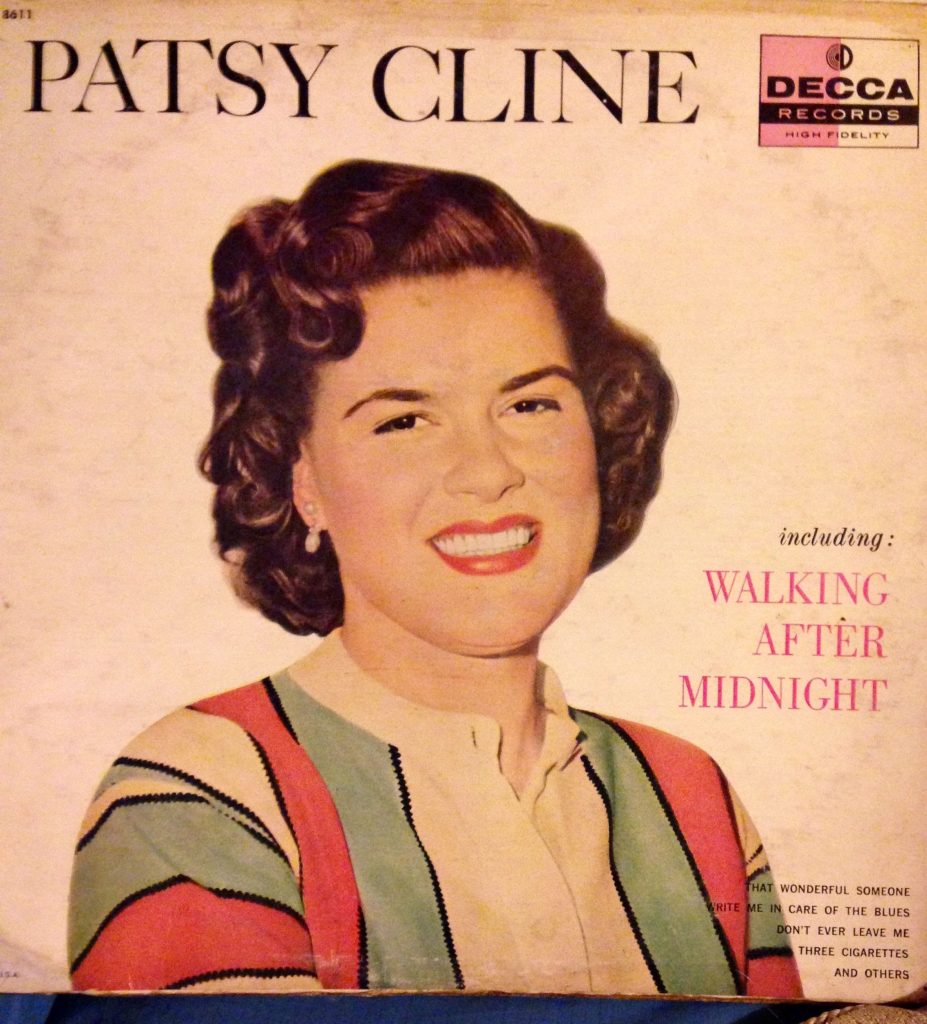
A moonlit wander down memory’s lane of longing
When Walkin’ After Midnight emerged as a single on February 11, 1957 by Patsy Cline via Decca Records, it quietly charted its mark—peaking at No. 2 on Billboard’s Country & Western chart and crossing over to reach No. 12 on the Billboard Pop chart. What might have felt like a simple late‑night stroll became the defining moment in Cline’s career, the song that wasn’t wholly expected to shine—but did.
From the opening strains of steel guitar and Patsy’s clear, resonant voice we are carried into a scene: the streetlights glow, the air is cool, and a solitary figure walks, searching. Her footsteps echo through the lyric: “I go out walkin’ after midnight, out in the moonlight, just like we used to do…” The simplicity is deceptive. It holds the weight of memory and the ache of absence. As older ears listen—they remember drives through dark country roads, jukeboxes humming into the night, the lilt of a voice that felt like home.
The story behind the song is quietly fascinating. Written by Alan Block and Don Hecht, it was originally intended for pop singer Kay Starr but landed with Patsy after the label passed on it. Cline herself was reportedly hesitant—it didn’t feel “country enough” to her, and she only performed it on the program Arthur Godfrey’s Talent Scouts (after being urged by the producer) where her rendition provoked so much applause that one account says the applause meter froze. That night became a turning point: the song released, the public responded, and the world heard Patsy’s voice in a new light.
In the lyric, there’s no overt drama, no shouting of heartbreak—it’s gentle yet resolute. The narrator walks “after midnight” not out of defiance, but in hope—hoping that the other is likewise walking somewhere, perhaps remembering, perhaps searching. The line “Searchin’ for you” lingers as an invitation and a confession. The instrumental arrangement—Nashville sound, steel guitar, subtle strings—wraps around the lyric like a soft shawl of longing. The mood is twilight: between day and night, between hope and resignation.
For listeners of a certain age, the song evokes that hush between heartbeats, that moment after the radio quiets, when you lean into a whisper and let it fill your bones. It reminds us of lives lived in chapters: of love lit and extinguished, of steps taken in the dark yet guided by memory’s light. Patsy’s voice—so rich, so clear—carries both strength and fragility: the firm tread of someone alive to feeling, the softness of someone touched by loss.
The legacy of “Walkin’ After Midnight” is more than chart numbers. It served as the breakthrough for Patsy Cline—it introduced her not only to country audiences but to the pop realm too, proving that a woman with a country heart could also speak to wider ears. In doing so, she laid a path for other voices that would follow—voices unafraid of heartache in moonlight, voices willing to walk when others slept.
As you close your eyes and maybe hear those opening bars again, you’re back there: a quiet street, a single figure in silhouette, footsteps soft, the night sky unending. “Walkin’ After Midnight” remains a gentle companion in the dark—a reminder that even when the world pauses, longing does not. It walks on.